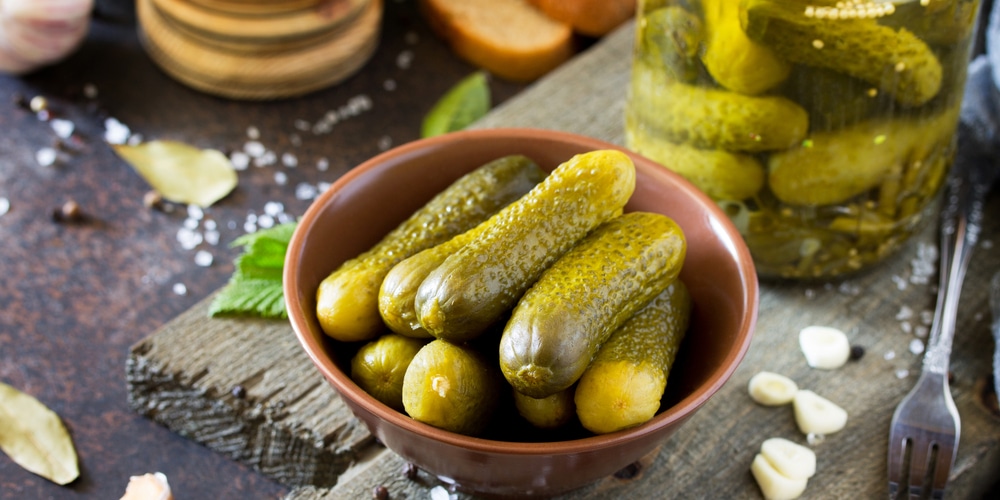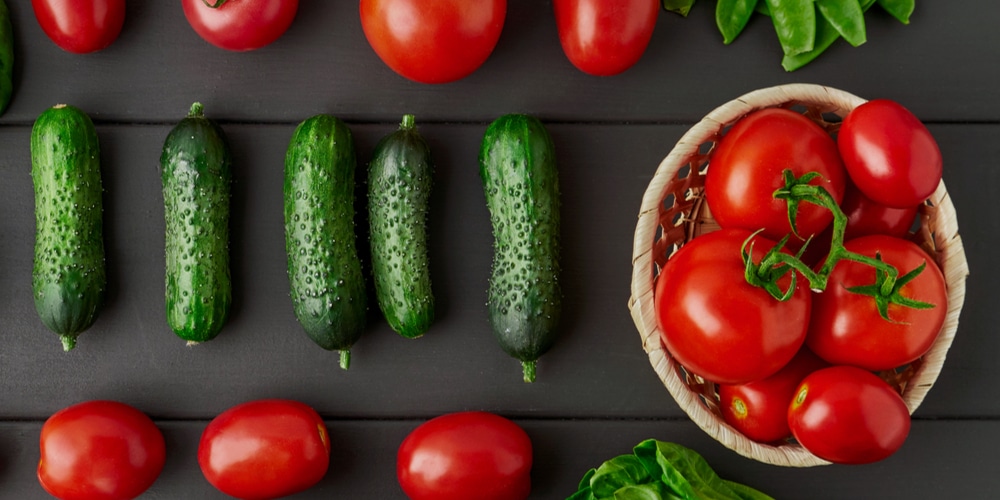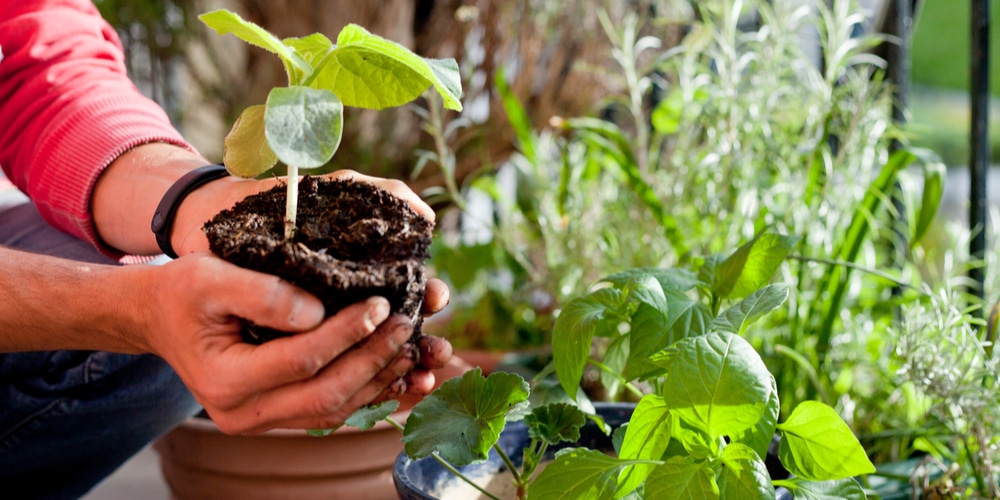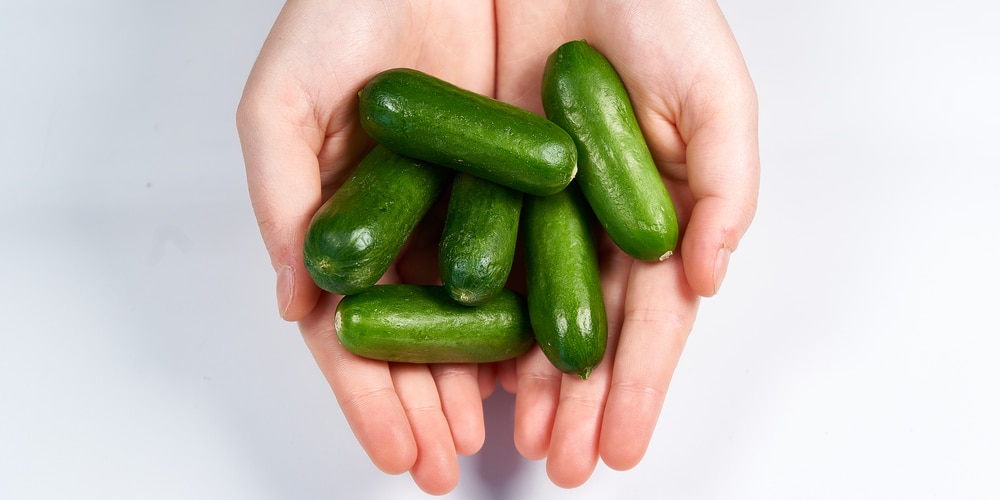You either love or hate pickles. And if you are among the set of the population that loves them, you should know that making them at home isn’t as challenging as you may think. It all starts by choosing a suitable cucumber variety.
Indeed, contrary to what you may believe, it affects the final result. While the best option for you might depend on your taste and preferences, here is a list of the best cucumbers for pickling.
Keep reading to learn more about pickling cucumber varieties. Here, you’ll also get tips on pickling your cucumbers and making the most out of them.
What Are The Best Cucumbers for Pickling?
The best varieties for pickling tend to have thicker skins. This characteristic allows them to stand the pickling liquid while remaining crunchy for longer. Also, they should be consistent in size: not too big or too small. Ideally, they should be between four and six inches long.
Slicing cucumbers tend to be larger. Additionally, their thin skins and fleshy meat doesn’t make them suitable for pickling. Instead, they are perfect for eating fresh. But what are the best pickling cucumber varieties? Here is a list of our favorite options!
Boston Pickling
One of the best varieties for pickling is the Boston cucumber. Under the ideal conditions, you’ll enjoy harvests about 55 to 60 days from sowing. The plant’s fruits are sweet, seedless, and crunchy, perfect for pickling. Ensure you provide adequate soil and nutrition to get abundant harvests!
Burpee Pickler
The Burpee pickler is a hybrid that produces plenty of crops within 60 days after planting the seeds. If you live in a warm region and you are familiar with problems arising from pests and diseases, consider getting this variety: it is tolerant to most. Their thin but firm skin makes them perfect for pickling.
National Pickling Cucumber
Another cucumber variety that tastes well pickled is the National Pickling Cucumber. After all, botanists developed this variety for this purpose! This versatile vegetable has thick and dark green skin. Even in a liquid, these cucumbers will stay crunchy. However, they take slightly longer than other varieties we included in this guide. But if you like crunchy pickles, it will be worth the wait!
Bush Pickle
If you don’t have much space in your garden, you should consider planting the “Bushy” cucumber variety. This plant grows compact, and its vines will stay about four feet tall.
If you don’t have a garden, don’t worry: you can still grow pickling cucumbers if you choose the proper variety. For instance, you can grow Bush pickles in a container. Also, this variety tolerates cold temperatures better than others in this guide, making it the ideal choice if you live in a cold region.
Little Leaf H-19
There might be no better option for the people who prefer smaller cucumbers than the Little Leaf variety. These veggies won’t grow more than five inches long and have all the characteristics of pickling cucumbers. These plants are also suitable to grow in crowded environments or containers since they tend not to grow too tall.
Double Yield
If you love pickles, you might be happy to know that this variety is a prolific producer. Its name derives from the ability of this plant to produce two fruits at a time when most other cucumbers only display one. If you regularly harvest these plants, you’ll get to enjoy cucumbers for longer.
Wisconsin SMR
This hybrid is a prolific producer that will give you plenty of four to six inches long cucumbers during the growing season. You can expect crops to appear within 60 days after sowing. These cucumbers have the ideal size for pickling. Additionally, their taste and texture make them a favorite among many picklers-lovers.
Honey Plus
While Honey Plus cucumbers don’t look like your traditional pickles, their texture and taste are perfect for pickling. These cucumbers have smooth and firm skins that won’t lose crunchiness in the pickling liquid. Pick them before they grow more than four inches long to get the best texture!
Rhinish Pickle
Rhinish Pickle cucumbers are early season crops that will give you the best results when you harvest them when they become three to four inches in length. They are sweet and crunchy, ideal also for fresh eating.
Pickling Best Practices
Pickled cucumbers are versatile ingredients you can use to “spice up” several dishes. The practice of pickling isn’t challenging, and it provides you with a way to preserve cucumbers for several months. If you have a thriving vegetable garden, pickling might be the best solution to enjoy your veggies!
There are several ways to pickle cucumbers. Some of the most common involve the use of vinegar or brine. If you follow a diet low in sodium, vinegar is the best option.
Plus, it is not as aggressive! Use white vinegar for best results! Other varieties will alter the cucumbers’ taste, and the results won’t be as satisfactory. You can be very creative in the process and add ingredients as you wish.
We suggest you include dry bay leaves, fresh dill, some salt and sugar, mustard seeds, and (if you like the taste) garlic cloves.
Don’t forget to sterilize your jars before making the pickles. Also, don’t overcrowd the cucumbers inside them to allow them to soak in the flavors better.
Related Article: Can You Eat a Yellow Cucumber?



